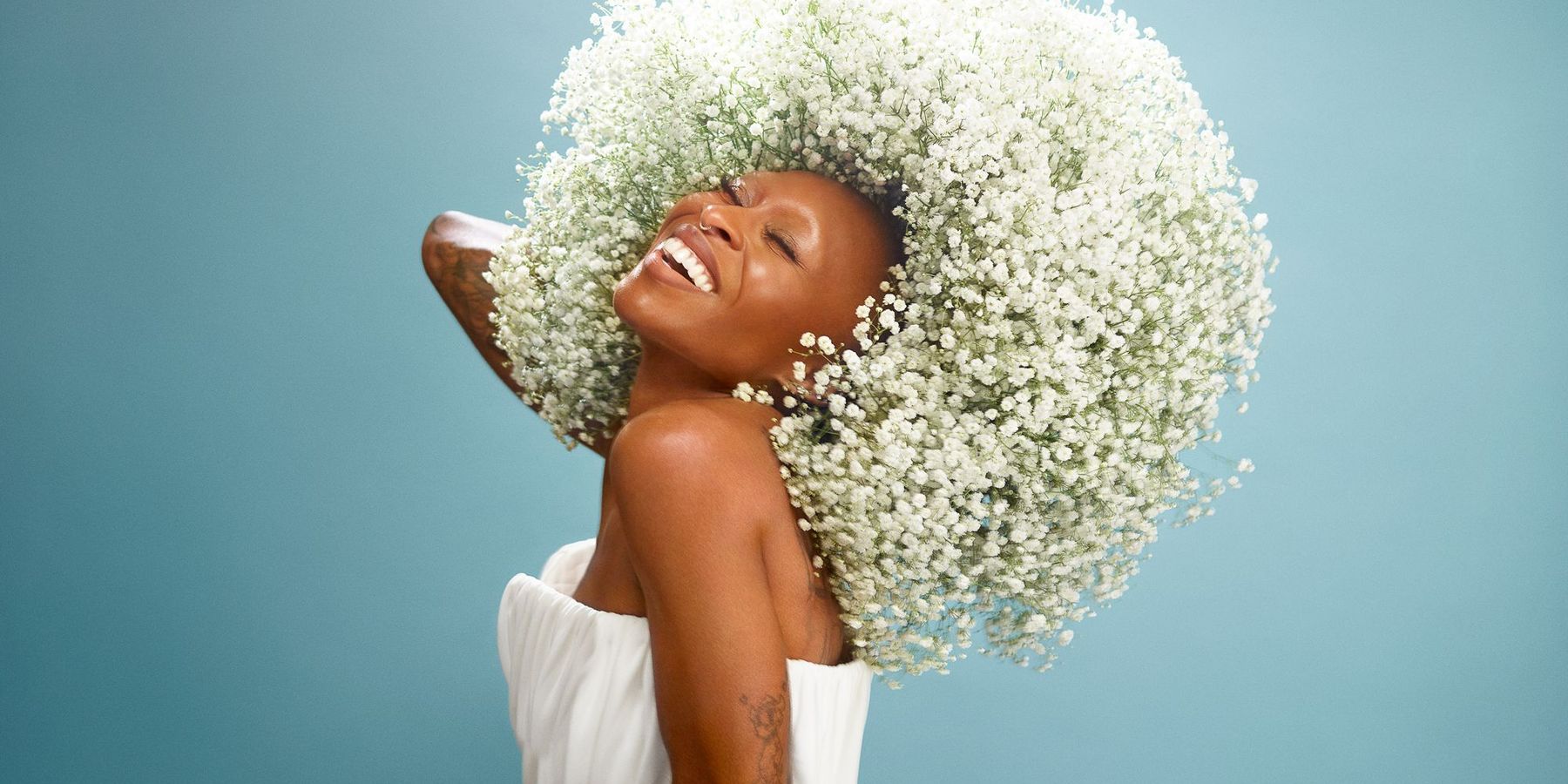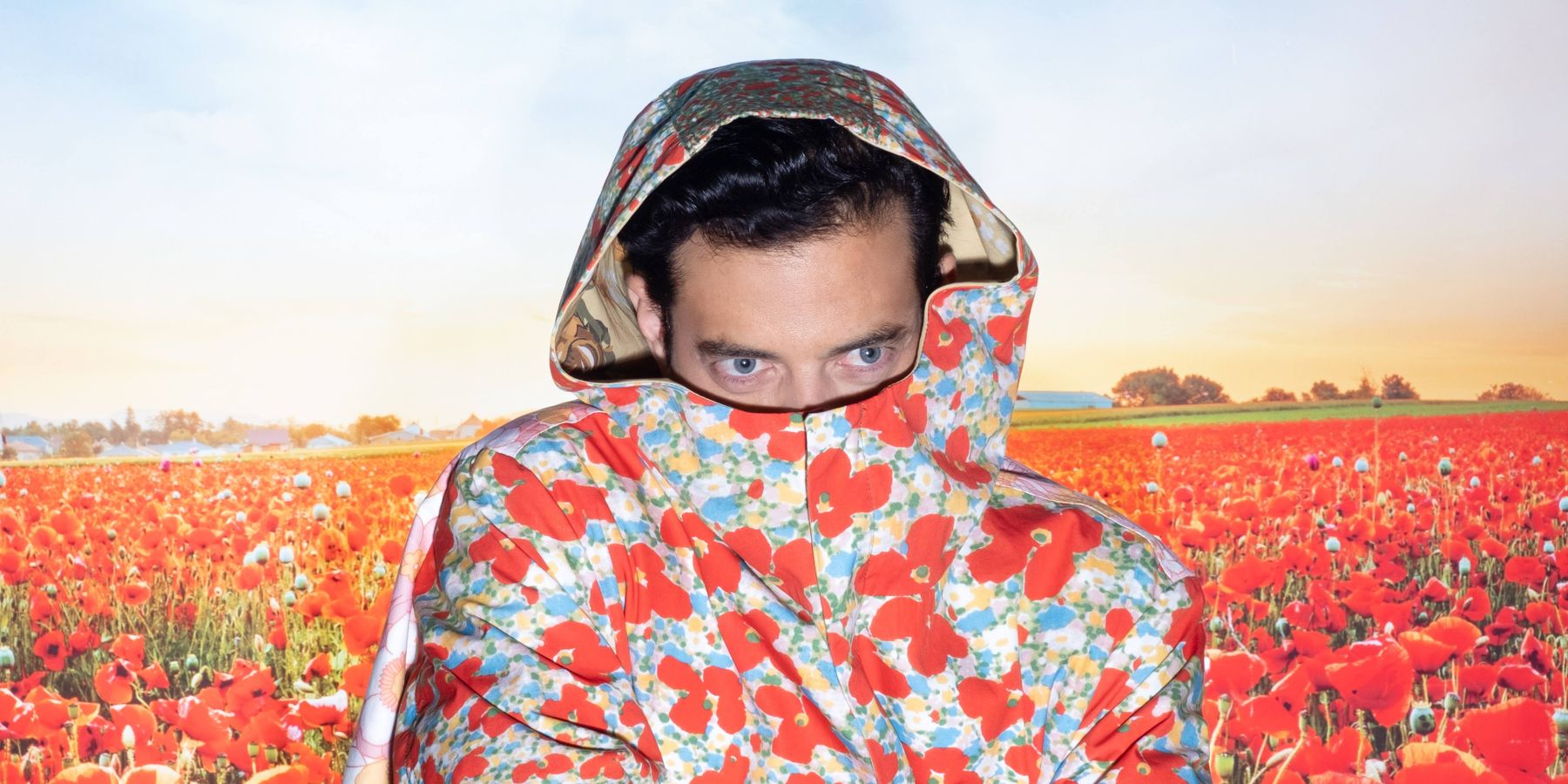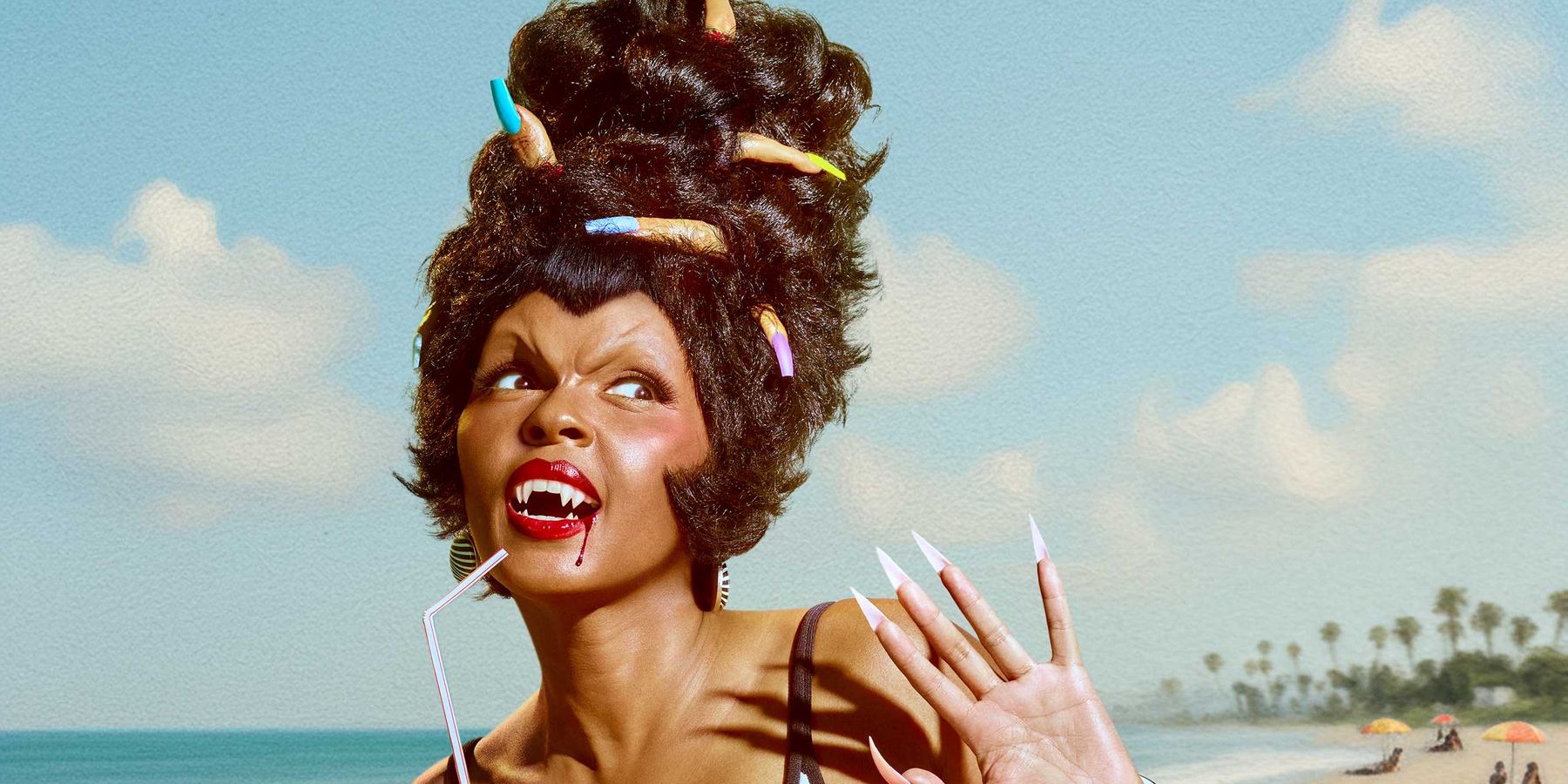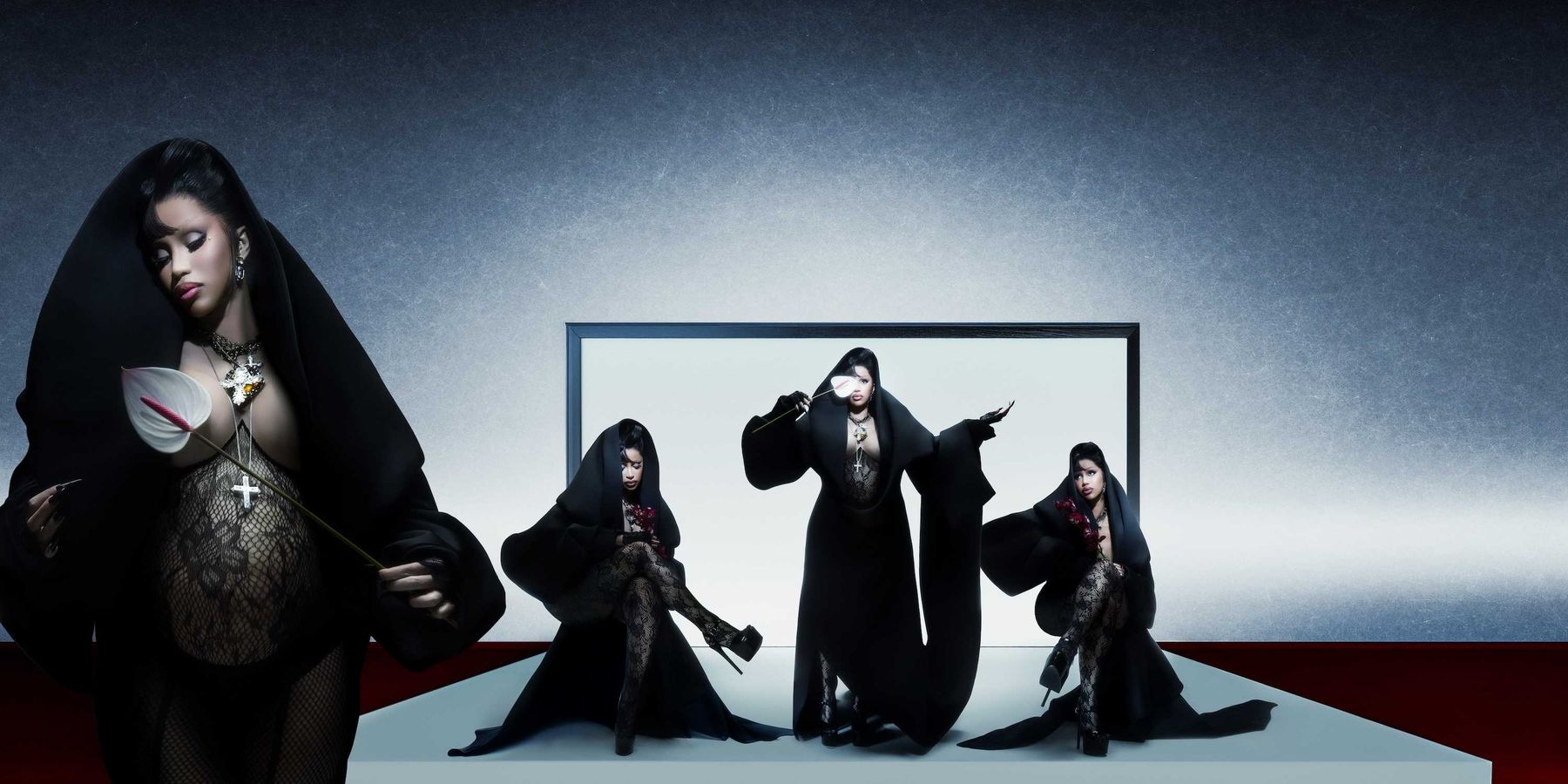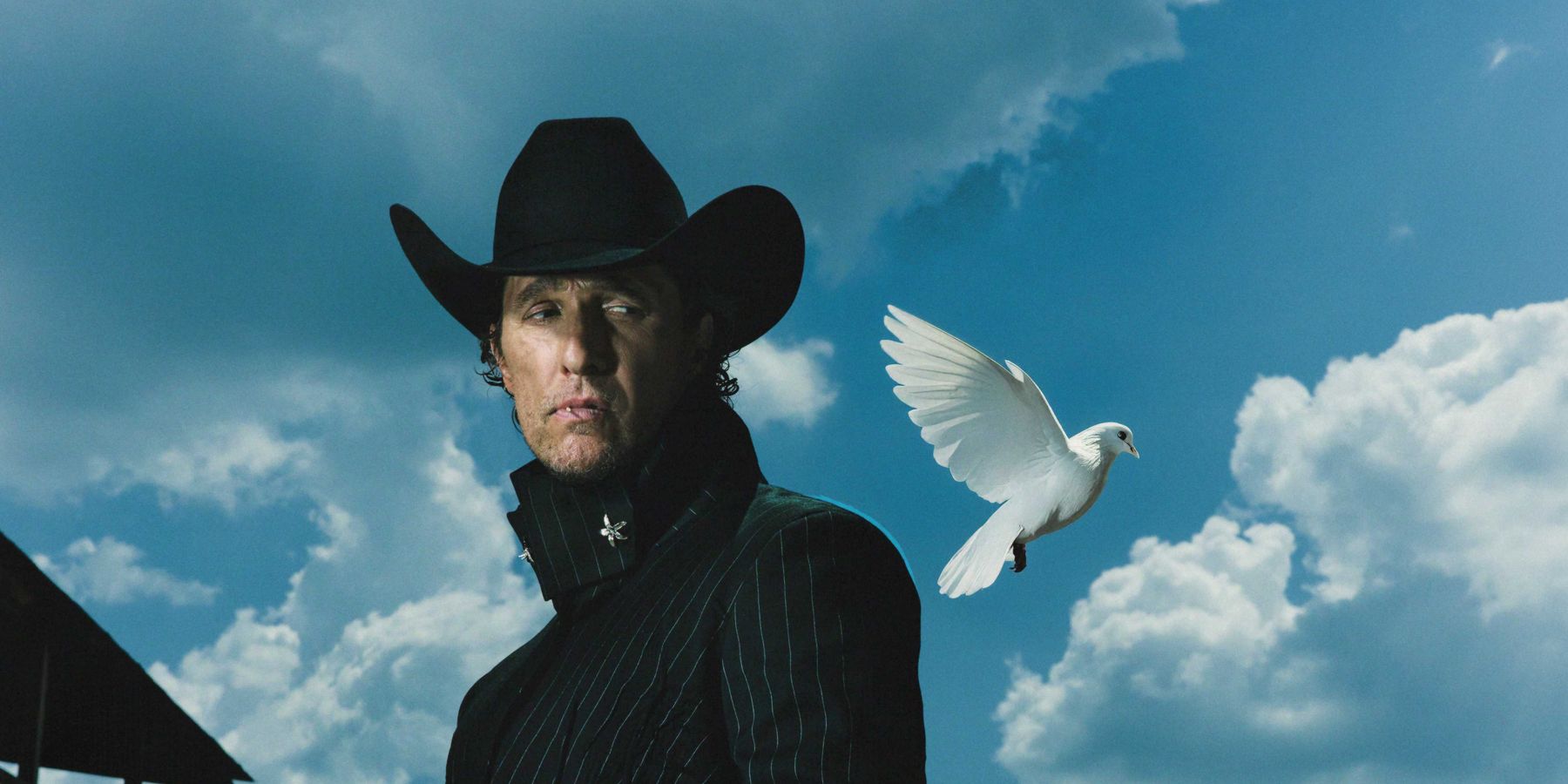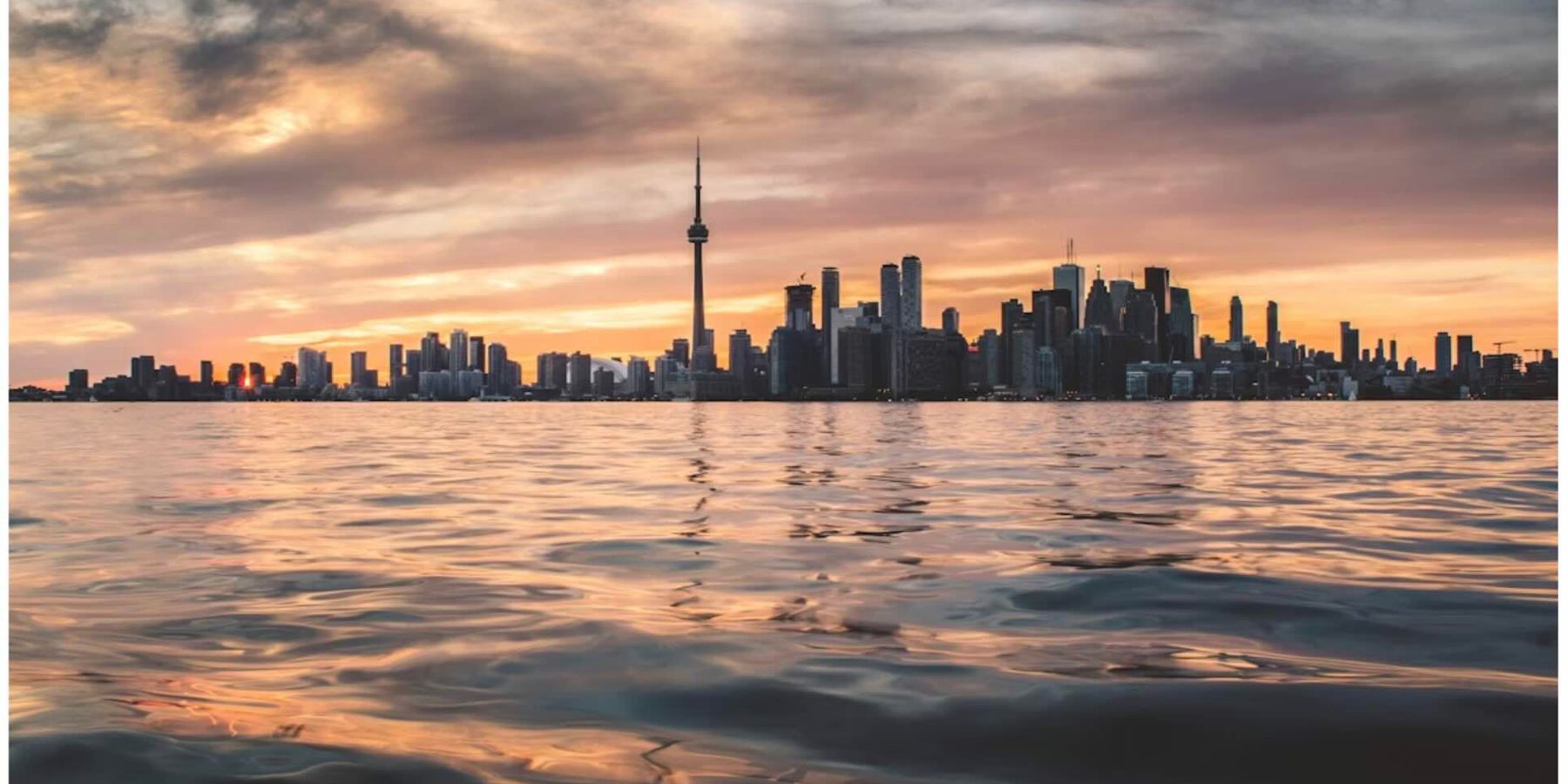
It’s been a few months since modeling legend Coco Rocha closed RVNG Couture’s Spring 2025 show – and yet people are still talking about it. The collaboration, of course, was a long time coming. Both Rocha and RVNG are two Canadian creatives, with Rocha believing the country is often underestimated on the fashion front.
In her own words, ‘if I can support Canada in the design and modelling spaces, then I will.’ This collaboration has done just that. The reason people are still talking about that show is largely down to Coco Rocha herself, and her pose-driven walk that brought a theatrical flair rarely seen on a modern runway. Her finale at RVNG’s Paris debut wasn’t just a walk; it was a moment.
In one swoop, it reasserted Canada’s influence in high fashion and challenged the increasingly minimalist tone of recent shows, pushing RVNG Couture’s designs into the limelight while getting everyone talking about a single model.
This has also done wonders for Canada itself. Despite having world-class talent, from models to designers to stylists, Canadian fashion has struggled to command global attention, with major cities like Toronto and Montreal often overshadowed by New York, Paris, or Milan.
But the tide is turning, and not just on the runway. As fashion increasingly blends with entertainment, performance, and tech, it’s beginning to reshape how we engage with culture itself. Even if you’re not on the VIP list for the catwalks, immersive fashion experiences are not hard to find; they’re surfacing in virtual shows, branded content, and even in digital entertainment spaces not traditionally linked to style.
Virtual clothing drops, live-streamed runway simulations, even stylised games embrace not just the basic notion of fashion, but something more avant-garde…even trailblazing. Fashion isn’t just about physical garments, but immersive, participatory environments. Playtech’s Fashion TV game series proves that fashion can amplify an existing idea: baccarat, the ‘little black dress’ of the casino world, can be reinvented at an online casino in Canada without resorting to gimmicks or passing trends. Fashion is a powerful visual cue; the Mega Party edition of Fashion TV has dealers dressed in disco-wear, both nostalgic and atmospheric. A classic, made new.
Similarly, The Hype magazine once dubbed virtual clothing runways ‘the pulse of urban culture’. Apple Vision Pro made it possible for spectators to tune into Balenciaga’s 2025 Spring/Summer runway from all over the world, while being able to view an interactive lookbook and its deep archive, making a once-exclusive event far more accessible (if you had the technology, that is). The notion of virtualised fashion may be divisive, but so is any creative shift in the fashion world. Turning heads is fundamental to progress.
Each example isolated may seem niche, but they all speak to a broader shift, a blurring of the lines that extends from social media (where so-called ‘regular people’ can have a huge influence on fashion trends), to cutting-edge technologies like the metaverse.
That’s why moments like Coco Rocha’s dramatic finale at RVNG Couture’s show feel like turning points. It has challenged the narrative, and it’s all because of one woman. Coco Rocha. The woman of the hour. But who is she exactly, and why has her brand of ‘theatrical modeling’ taken the fashion world by storm? To understand that, we should first take a look back at the past.
Coco Rocha: Into the World of Fashion
Mikhaila ‘Coco’ Rocha was born in Toronto in 1988, but she was raised in Richmond, British Columbia. In her early years, she didn’t set out to be a model. In fact, she spent a lot of time immersed in the world of Irish dancing – an art form that we’ll come back to later on when discussing her signature movement style.
At fourteen years old, she was discovered at a dance competition by modeling scout Charles Stuart, who recognized her for her striking looks and unique stage presence that clearly made her a standout from the very beginning.
By 2004, she was signed with Supreme Management in New York, landing her first breakthrough moment with a cover shoot for Vogue Italia. That cover then launched her even further into the modeling stratosphere, and she quickly became a go-to for designers like Christian Dior, John Galliano, Jean Paul Gaultier, and Karl Lagerfeld.
Over the years, she did a number of shoots that bolstered her popularity, but it was on the runway where her own unique style really came alive. While most models relied on the standard stride, Rocha turned the catwalk into a kind of theatre – using her body to tell stories and inhabit characters in a way no one had done before.
With this in mind, designers and photographers began seeking her out not just for her looks, but for what she could do. According to Tyra Banks, she was the ‘Queen of Pose’, and that statement couldn’t be more true if you were to see her in her element.
Coco Rocha’s Theatre
In 2020, Coco Rocha was invited by Jean Paul Gaultier to break into an Irish jig halfway down the runway, set to the Scottish Highland bagpipes. The moment went viral, and Vogue dubbed it the ‘Coco moment’, a career-defining highlight that established her as more than just an average model, but a full-on performer on the runway.
And this says a lot about Coco Rocha’s style in general. As we mentioned previously, her early years were spent perfecting the art of Irish dancing, which gave her a unique physical vocabulary that would later redefine runway modeling. Most models, of course, are trained to walk in a straight line with minimal expression.
Just look at the top shows from the Men’s Paris Fashion Week – the key was clearly to blend in, not stand out. Every model acted as a neutral canvas, allowing the clothes to speak for themselves, and this is indicative of the industry as a whole. They did this by keeping their arms relaxed, walking with a strong posture, steady pacing, and wearing a blank facial expression. In other words, there’s no hint of personality or narrative – it’s all about presenting the designer’s vision, not your own.
And yet Rocha has broken this mould – not by rejecting the designer’s vision, but by expanding it. Rather than simply showcasing the garments, she uses her background in dance to animate them, breathing life into the fabric with every gesture, tilt, and turn. Where a traditional model might glide down the runway, Rocha brings intention to every step, often adjusting her posture, expression, or rhythm to reflect the specific mood of the collection she’s wearing.
The ‘Coco moment’ is a unique case, so let’s look at the RVNG showcase as an example. At RVNG Couture’s debut during Paris Fashion Week, Rocha closed the show wearing a sequin ballgown – a nod to Canadian artistry and couture drama. Rather than simply walking, however, she gave an unmistakable theatrical performance, inspired by the 80s and 90s catwalks of Alexander McQueen and Givenchy. According to one report, her walk didn’t just show the dress, it ‘told a story’, infused with movement, pause, and shape.
Once again, this caught everyone’s attention, but in a way, the moment felt even more viral this time. It feels as if the world of fashion is building to something. Regeneration is a strong word, but there is certainly a change on the horizon, and it might just kick off in a few months’ time during the Toronto Fashion Week.
Toronto Fashion Week
While there are no confirmed details just yet – for instance, which show she’ll walk in, the designer she’ll represent, or the nature of her performance – Coco Rocha is expected to make an appearance during the Toronto Fashion Week in September, and when she does, it’s likely that she’ll steal the show.
Largely due to her, the world has been paying far more attention to Canadian fashion, especially in the realm of couture and performance-based runway. Her presence alone, then, will bring fresh eyes to Toronto, with fanatics tuning in to watch her, but at the same time, gaining access to the most impressive Canadian designers.
And the world of fashion will know this. Both designers and audiences alike know already that Coco Rocha will define Toronto Fashion Week, and as a result, we might be about to see a seismic shift in the industry itself.
Breaking the Mold
What do we mean by this? Well, let’s look at Alexander McQueen’s Fall 1999 show. This is often cited as one of the most game-changing moments in fashion history, and for good reason. The show’s finale featured model Shalom Harlow, who stood on a rotating platform in a white dress, with two robotic arms spray-painting her live on stage. It wasn’t just a runway walk – far from it! It was performance art. A single moment that challenged what a fashion show could be, and pushed designers to think beyond traditional presentations and into the realm of full-scale theatrical storytelling.
Kate Moss also did this in the early 1990s. At a time when supermodels like Cindy Crawford and Marpessa Hennick were dominating runways, Kate Moss arrived with a completely new look. Unconventional, vulnerable, simple, and different. Her appearance in Calvin Klein campaigns and her work with Corinne Day effectively launched her own unique trend – a shift influencing not only aesthetics, but casting, advertising, and photography styles throughout the rest of the decade.
And how could we not mention Twiggy? Bursting onto the scene in the 1960s, Twiggy transformed the fashion industry with a brand new, fresh, youthful look. Unlike the models of the previous era, Twiggy’s frame, short hair, and wide-eyed innocence introduced a new aesthetic that captured the spirit of the sixties, eventually becoming a cultural icon who shaped trends in makeup, photography, and youth culture.
It was a long time ago, granted. But it’s arguable that this impact is still being felt today. Twiggy’s influence, of course, paved the way for fashion to embrace diversity in beauty standards, moving away from the rigid, glamorous ideals of the past towards a more playful, accessible approach. Her look symbolized freedom more than anything, and this is still celebrated in everything the fashion industry does.
But we digress. Essentially, these are benchmark moments that redefine what fashion can be, and remind us all that there is no set formula. Designers don’t have to work to code, and models don’t have to be stuck in a mould. What Coco Rocha represents – especially with her upcoming Toronto Fashion Week appearance – is a similar kind of disruption. She’s not just walking, she’s narrating, emoting, and embodying the garments in a brand new way, and when she hits the runway, the whole world will see it.
What’s Next for Fashion?
Are we saying that, by defining the Toronto Fashion Week, Coco Rocha will get every model following in her footsteps? No, probably not. It’s not likely we’re going to see Betsy Gaghan doing an Irish jig down the runway any time soon! But what she will change is the way models – and, to an extent, designers – approach their craft.
Coco Rocha’s theatrical style isn’t about mimicking her exact steps or dance moves; it’s about inspiring models to bring more of themselves into each performance, to connect emotionally with the clothes and the audience, and treat the runway as a stage rather than just a path to walk.
This shift could encourage a new generation of models to explore their creativity in a way they’ve never done before. As we mentioned before, being a traditional model has been all about neutrality. Their job is to keep a plain face, keep their movements controlled, and act as a canvas for the designer’s vision.
But Rocha’s influence challenges that notion. It suggests that personality, expression, and storytelling can enhance the fashion, rather than distract from it, and that the runway can be a place where art comes alive. As the years go by, then, we could be about to see models believing more in themselves and their own creative vision.
And designers might even encourage them to do so. As noted, Toronto Fashion Week is set to be one of the biggest weeks ever for Canadian fashion, in no small part due to Coco Rocha’s influence and presence. So why wouldn’t designers want to be a part of that? Why wouldn’t they want to try to replicate their own viral moment, working with a model who can draw the spotlight and bring a unique energy to their collection?
Designers are increasingly recognizing that partnering with models who can elevate their vision beyond mere presentation is a powerful way to captivate attention and create lasting impressions, and Toronto Fashion Week might just be the catalyst where this new wave of fashion storytelling truly takes off.
Conclusion
The fashion landscape is constantly evolving. Especially in the digital world we all live in today, where trends spread faster than ever and audiences crave more immersive, authentic experiences. Coco Rocha’s previous catwalks and photo shoots have already got people talking, and Toronto Fashion Week will be no different.
Whatever she does, her performance will spread like wildfire, reaching far beyond Canada’s borders and influencing designers, models, and fashion lovers worldwide. As a result, it’s likely that the industry will fully embrace this shift. Over the next few years, we’ll see more shows that prioritize storytelling and personality, transforming fashion weeks everywhere into unforgettable, theatrical experiences that push creative boundaries further than they’ve ever been pushed before.
Entertainment
Cynthia Erivo in Full Bloom
Photography by David LaChapelle / Story by Joan Summers / Styling by Jason Bolden / Makeup by Joanna Simkim / Nails by Shea Osei
Photography by David LaChapelle / Story by Joan Summers / Styling by Jason Bolden / Makeup by Joanna Simkim / Nails by Shea Osei
01 December
Entertainment
Rami Malek Is Certifiably Unserious
Story by Joan Summers / Photography by Adam Powell
Story by Joan Summers / Photography by Adam Powell
14 November
Music
Janelle Monáe, HalloQueen
Story by Ivan Guzman / Photography by Pol Kurucz/ Styling by Alexandra Mandelkorn/ Hair by Nikki Nelms/ Makeup by Sasha Glasser/ Nails by Juan Alvear/ Set design by Krystall Schott
Story by Ivan Guzman / Photography by Pol Kurucz/ Styling by Alexandra Mandelkorn/ Hair by Nikki Nelms/ Makeup by Sasha Glasser/ Nails by Juan Alvear/ Set design by Krystall Schott
27 October
Music
You Don’t Move Cardi B
Story by Erica Campbell / Photography by Jora Frantzis / Styling by Kollin Carter/ Hair by Tokyo Stylez/ Makeup by Erika LaPearl/ Nails by Coca Nguyen/ Set design by Allegra Peyton
Story by Erica Campbell / Photography by Jora Frantzis / Styling by Kollin Carter/ Hair by Tokyo Stylez/ Makeup by Erika LaPearl/ Nails by Coca Nguyen/ Set design by Allegra Peyton
14 October
Entertainment
Matthew McConaughey Found His Rhythm
Story by Joan Summers / Photography by Greg Swales / Styling by Angelina Cantu / Grooming by Kara Yoshimoto Bua
Story by Joan Summers / Photography by Greg Swales / Styling by Angelina Cantu / Grooming by Kara Yoshimoto Bua
30 September
